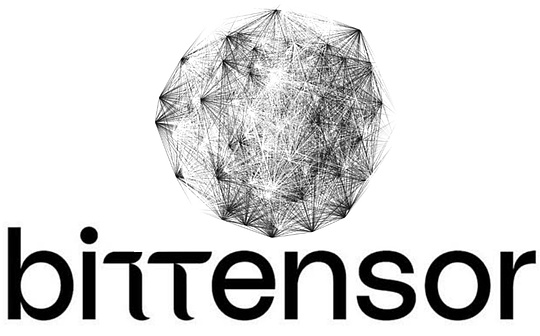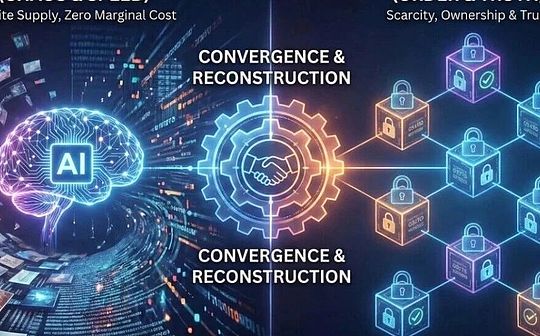
Author: Nick HOTZ, Arca analyst; Sami Kassab, former MESSARI analyst, OSS Capital now partner; Translation: Bitchain Vision Xiaozou
Last weekend, Bittersor became the target of the criticism. Some well -known investors believed that it was a useless project, or the token TAO was only marked as a MEME coin.Since mid -2023, ARCA has been supporters of Bittersor and investors of TAO. We hope to eliminate some misunderstandings and express our optimistic views on the future of the agreement.We invited the former Messari analyst and OSS Capital’s current partner Sami Kassab to complete this article.
In this article,Our goal is to deal with the criticism of Bittensor on the front. There are some Crypto and AI backgrounds that are helpful to understand this article.
In short, Bittersor is Launchpad (release platform), which is an artificial intelligence application and its underlying infrastructure, and is similar to the basic platform for Ethereum as a smart contract.In the Bittensor ecosystem, various professional networks (subnets) are specifically targeted at specific AI use cases, such as financial forecasting, intelligent search functions and creative images.Other subnets centered on infrastructure have extended application -driven subnets to provide resources and services such as model pre -training, fine -tuning, data collection and data storage.
Each subnet is supervised by an Owner (owner) and is responsible for designing a unique incentive system tailor -made for subnet targets.Among these subnets, there are a set of Validators and miners.The sub -network verifications run all the same verification software (ie, incentive mechanism) designed by the owner of the subnet to guide the focus of the miners (model operators and resource providers) to the target task.In addition, the authentication of the subnet is a special gateway to access the sub -network service and resources, because only they have the ability to question the miners.
We see that Bittensor’s subnets are divided into two categories: public subnet and verification service subnet.
12. Public subnet accelerate open sourceAIDevelopment
The “Open Source Plan” has been facing challenges for a long time because of lack of economic incentives for free sharing work.In particular in the field of open source artificial intelligence, the dependence on voluntary contributions has hindered the growth of the field.Bittersor’s public subnet is a solution that allows open source AI researchers and engineers to monetize their work, thereby promoting the development of the field.
Take Nous Research’s subnet as an example.The subnet reward the fine-tuning model of the GPT-4 performance through the competitive ranking framework.In order to win competition, the miners must upload their models to HuggingFace to ensure that it is open source for verifiers for the benchmark test.This prevents verificationrs from conducting exclusive access to fees.
This incentive model can actively motivate contributors to fine -tune the open source large language model (LLM).Therefore, a large amount of fine -tuning models have been generated and shared, becoming a public product, which benefit the entire community and promote the development of open source artificial intelligence.
Other subnets that follow this model also have:
· Myshell’s subnet 3: Inspiring the progress of open source text voice conversion technology
· RaFoundation’s Subnet 9: Inspiring the progress of the open source pre -training model
· Omega Labs’s Subnet 24: Inspiring the collection of open source multi -channel data sets
Although these subnets may not provide direct revenue opportunities for verificationrs, their contributions allow the subnet driven by Bittersor’s application to integrate their output and monetize them.For example, the VISION subnet plans to integrate the head model of NOUS subnet into its decentralized reasoning network.This integration will allow verifications on Vision sub -Internet to monetize these models, such as chat robot interfaces provided by Corcel.
In the future, subnets focusing on fine -tuning and pre -training may develop from public product models.For example, by using ZKML, subnets can allow verifications to evaluate the performance of the miner model without revealing their ownership.This may give birth to new monetization strategies to protect intellectual property privacy.
22. Verify service subnet monetization miner“intelligence“
For those who are familiar with financial terms, public product subnets are “backgrounds”, and verification service subnets are “front desks”.Verify service subnet using existing AI models and infrastructure to create monetized B2B or B2C products or services.
Subnet 8, ownership trading network (PTN), is a verification service subnet.The subnet inspires miners to provide favorable trading strategies in digital assets, foreign exchange, and stocks.The transaction proposal to obtain successful miners will be distributed more TAO, and the success rate of the transaction proposal to a decrease of more than 10%will be canceled.The verificationrs can obtain these suggestions “signals” in person, or pack them and sell them to other traders or funds.The point is that, verifications such as Timeless, they understand the situation of the miners, and can create a product of OnePlus one greater than two -the best miners’ predictions to create highly credible transaction suggestions.
Corcel is another example of the verifier’s construction of monetized products on the sub -network.Subnet 18 — Cortex.t —— Use the paid subscription costs of Anthropic, OpenAI and Google to arbitrage, and allow miners to respond to these centralized models.Corcel provides these models for free, but gets value from low -delay and access to miners on Subnet 18.With more and more users, Corcel plans to visit API visits, while providing the same product, reduce the price of centralized providers.
Verifying the service subnet model provides a convincing incentive mechanism for the entity. These entities either become a verifier on a specific sub -network or pay for the API of the verifications.In this way, the company can use miners’ intelligence to create products and services and monetize it.Other subnets that adopt this business model include:
· Subnet 4 of Manifold Labs: Can use decentralized verified reasonable reasoning network creation products
· Kaito AI’s Subnet 5: Provide the foundation for the construction of a decentralized search engine as the core, enhance the data retrieval and analytical ability
· PHILANTHROPE’s Subnet 21: Provide support for application and cloud storage solutions, and use decentralized networks to store decentralized data storage
3, Copy for the targetBittersorVoice of criticism
Recently, Bittersor has been criticized for its operating efficiency and award system. Some people think that they have hindered the innovation of miners and will inspire miners to make similar reactions.
To solve the problem of efficiency, it is very important to break all the tasks on the sub -network to each miner.In fact, the task for the purpose of evaluating miners will be distributed to the entire subnet.The task initiated by the user will be selectively sent to a miner or a group of miners based on the routing strategies of the verification.This enables the verifications to understand the miner ecosystem and create a complex routing algorithm for specific applications.In addition, the task is not performed on the blockchain, but on the API layer that is completely independent of the blockchain.
There is a certain weight on criticism of the reward system.The incentive mechanism formulated by the owner of the Ziwang directly guides the optimization of miners.This means that the effectiveness of the incentive design restricts the collective wisdom of Ziwang.At present, most subnets use centralized models to determine the output of miners, which may limit the surpassing quality or performance of these models.When the open source model is still developing, this method is enough, but once the open source model reaches the same level, the benchmark strategy of innovation will become a necessary element.
This challenge has injected competitiveness into the Bittersor ecosystem, and the incentive subnet surpass each other based on the validity of the verification mechanism.This has promoted the development of more comprehensive incentive mechanisms and verification frameworks.An example is suggestions that some teams have incorporated manual evaluation into the verification process, which can significantly strengthen the output.
The criticism of the reward system stated that this reward system would encourage miners to make similar reactions, and in reality, the miners were pushed to surpass each other by optimizing the specific goals of their subnets.This not only promotes the diversity of output, but also promotes innovation.The Yuma consensus mechanism incentive verifications make similar rankings to miners to ensure that the assessment of the output is consistent.
In these criticisms, Subnet 1 created by the RAO Foundation for text prompts was reviewed by its incentive design.However, these criticism stems from the lack of understanding of the goal of the subnet.Subnet 1 is not just a chat robot. Its real purpose is to reward miners who effectively retrieve information in its model.The verificationrs use these retrieved files to build a reasoning answer, so as to measure which miner can retrieve the correct information at the fastest.
Note that Subnet 1 represents a team to solve specific problems.Criticizing the entire network based on the shortcomings of Subnet 1, just like a single application to evaluate the Ethereum network.
>
Another concern is that the current system is seriously dependent on the altruis doctrine of the verification person to run normally.The verifications are determined to determine the amount of tokens received by each subnet, but there is no clear incentive measure to allow the verification to choose a subnet that is beneficial to Bittersor’s long -term productivity.Under the current design mode, verificationrs can easily adopt Pay-TO-PLAY (paid experience) mode or skirt relationship.The contributor of the OpenEnsor Foundation recently proposed BIT001: Dynamic TAO solution, it is recommended to add a market mechanism to determine the token distribution of the subnets that all TAO pledges will participate in the competition.
4As well asTaONative currencyBittersorDeep integration of the system
Finally, some people think that Bittersor’s TAO native currency is a useless MEME currency farce, but it is valuable because of the narrative around Crypto and AI, and its real value is zero.Although we hope that Bittersor’s factor value is equivalent to the factor value of Dogwifhat, we have to realize that the effectiveness of the TAO token far exceeds MEME coins.
To sum up, the TAO is sent to the three parties to the three parties -related stakeholders -miners, subnet owners and verifications:
· Miners complete specific machine learning tasks, such as reasoning or fine -tuning, or providing infrastructure such as file storage or calculation.
· The design reward model of the Ziwang owner to promote the maximum value creation.
· Verifier uses the reward model designed by the subnet owner to determine the task completion of the miner.
>
In addition, the four main mechanisms of TAO’s value to obtain value include:
· The authentication of the pledged TAO can directly distribute the tos to their subnets or another subnet according to the number of pledges of TAO.
· Ziwang owner must lock TAO to register.
· Miners and verifications must burn TAO to register on the sub -network.
· Verifier must pledge TAO to access the miners and sell their products and services.
A single sub -network depends on the native token sent to the network contributors to guide the supply and future network value, just like most decentralized physical infrastructure networks (DEPIN).For example, a file storage network such as Filecoin, Arweave or Subnet 21-Filetao needs to pay the cost of storage and retrieval information to the miners to allow the demander to see the value in the network.
The important thing is that the TAO token also plays a unique role in the Bittensor network by distributing the tokens to the subnet.In the current network, the task of the verifications is to determine which subnets are worth distributing TAO.The network realizes a entrusted pledged system to select the verification person, and the client pledged their TAO to the verifications representing them.Although it is necessary to rely on verificationrs to make decisions that meet the best interests of the Internet, the responsibility of distributing tokens itself has potential value.If head verifications no longer believe in the future of the Internet, do skirting relationships and self -transactions, they may make them use their role advantages to profit.
When the new subnet owner registered the subnet, once the sub -network limit (currently 32) is reached, the system will automatically cancel the token with the lowest amount of token.The key is that this will eliminate low -quality projects and allow new potential high -quality projects to try to attract tokens.The system determines how much a subnet owner needs to lock in through the algorithm to review the registration of the previous subnet.The mechanism aims to balance the opportunity to build the existing subnet owner on Bittersor.As the registration locking cost reaches 10,000 TAO, the debate around this balance has recently intensified, which means that the demand for construction on the network is huge.
>
Like many other DEPIN projects, miners and verifications have participated in a combustion casting balance (BME) system that adds anti -inflation effects to tokens.The time list of the tokens is similar to Bitcoin. The upper limit of the tokens is 21 million, a half -year decrease.However, BME temporarily removed token from circulation supply, creating a consistent source of demand for TAO, thereby delaying that the future distribution is halved.On average, this effect has been reduced by 11%of New Type distribution, and the general four -year reduction plan has been delayed for 5 months.With the maturity of the subnet and the reward mechanism, the competition between miners will increase, resulting in a decline in profit margin and a larger proportion of tokens issuance.
Although all these systems have good mechanisms, the capabilities of authenticists are the most critical mechanism for miners’ ability to access monetization, because it transferred the token economics system to the real world of value.Miners have economic motivation to respond to verificationrs, because this will increase their “trust” scores.Trust scores are the key decisive factor for miners to receive TAO distribution volume.As a result, the verified as the only access point for the miner.
Different verificationrs achieve different levels of effectiveness by accessing miners.In the PTN example mentioned earlier, the verifications can view the miners’ transaction recommendations.A verifier can simply forward the transaction from the most performed miner to their customers and charge a subscription fee.However, another miner can gather the miners’ response to increase the credibility of their suggestions, use these responses to create a diversified investment portfolio, and even analyze the miners.For example, a miner has obvious advantages when trading the euro, but it has no advantage when trading the Australian dollar.Adding this additional value layer to the transaction path will allow verifications to achieve monetization at a higher level.Therefore, these two verifications have a very different individual effect in possessing and pledged TAO.
It is important that because the verificationrs can be differentiated through their routing algorithm, the market has not achieved commercialization. Over time, the profit will tend to be zero.This is a monopoly competition, with differentiated skills, brands, and technologies. The team creates new products based on the commercialization output of miners.On PTN, the value (marginal cost) of each purchase and pledge of TAO is equal to the incremental value (marginal income) that they can obtain by selling their output.
Obviously, Bittersor is still in a considerable early stage, and most subnets are in the pre -profit or even pre -income stage.However, as a general rule, the minimum fair value of TAO should equal to the verified that the total revenue obtained from the forwarding output of the miner and the future discount income obtained from the monetized output of the potential future subnet.We have seen that in the past six months, the rise in the price of TAO has not reflected the speculation of the model, but reflects that people’s expectations for the future potential income of the verifications are getting higher and higher.
Compared with the early encrypted flywheel (such as the first iteration of Helium HNT or Axie Infinity Axs), the TAO token is naturally self -countermeasure.The verifications, as well as the final token holder, are responsible for determining the token distribution between subnets.With the rise of the value of TAO, more capital value distribution can be guided to different projects, and the well -known “threshold rate” of the receiving token distribution will decline.Just like any market mechanism, this will eventually cause waste and inefficient efficiency. Low -quality projects absorb a larger proportion of token distribution, which will eventually lead to the lower pricing of TAO because the growth prospect becomes weakened.
With the tightening of the belt, the verifier has to re -examine their token distribution decisions, and increase the threshold rate for providing token distribution, eliminate bad actors and poor performance subnets.As the price falls to a low point, only the highest quality subnet with the maximum value and potential value of Bittensor can obtain token distribution, thereby helping the stable system, similar to the difficult adjustment of Bitcoin.More effective resource allocation will lay the foundation for the future growth of the network.
5,rightBittersorOptimistic attitude
When we first visited the project Discord, we have seen the enthusiasm of the Bittersor community. Community members conduct in -depth discussions on the technical concepts of machine learning and how to participate and promote the development of Bittersor.Just tokens.Bittersor was originally a grassroots plan promoted by an independent contributor. It has now developed into a dynamic ecosystem, attracting well -known developers such as Nous, Kaito, MyShell, Wombo.Attract.
We are all firm believers in Bitcoin. At first, we were not sure whether the encryption field would produce other valuable things.However, we saw the strong immune defense displayed by the Bitcoin community. It rejected Ethereum “scams”, and also believed that some useful projects were established on Ethereum.Later, we also saw the same mean remarks (“without value”) in Solana, because the believers in Ethereum noticed that although the DEPIN project is migrating to the only chain that can support them, Solana is occupying invasionTheir territory.
This weekend reminds us of the difficulties faced by Ethereum and later Solana when obtaining support for mainstream encrypted users, as well as their criticism.When some people see an extra ChatGPT cloned body attached to a worthless MEME coin, what we see is a community composed of extremely smart people.Accelerate the development of open source artificial intelligence.
We are still in the early stages of Bittersor, but all signs show that it is moving on the right track.There is a big difference between the good projects and useless projects that are struggling under their own success.In the end, I believe that Bittersor is betting on market dynamics; this is a belief that as long as there is an appropriate economic incentive, the smartest person will gather together to overcome any challenges.







